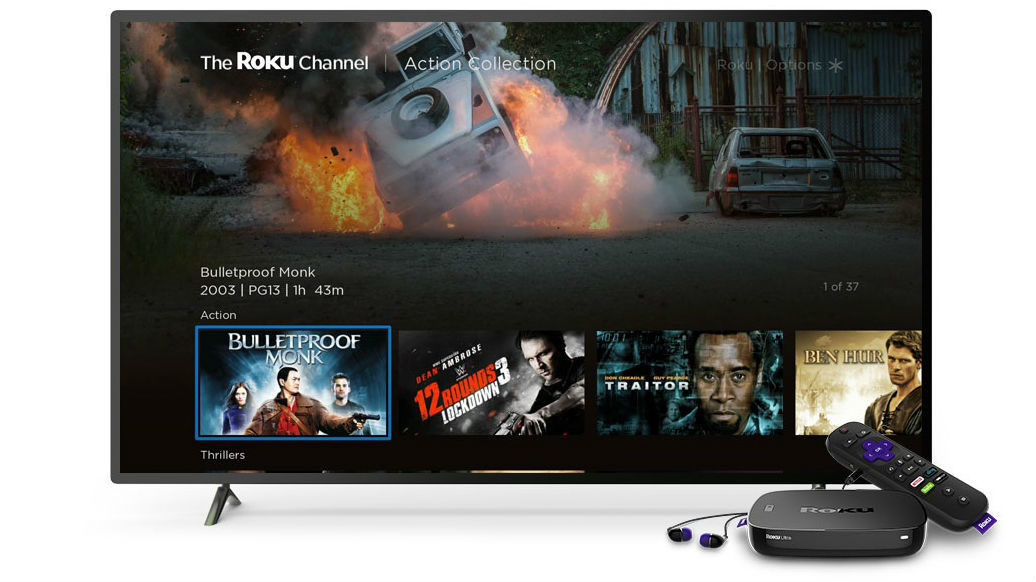Streamers Flock to AVOD Gold Rush

Just a few years ago, there was talk of the end of the TV commercial, as Netflix’s subscription monetization model became the template for the many streaming platforms that followed it.
Popular subscription streaming platforms that did rely on advertiser support, such as Hulu and CBS All Access, introduced premium subscription tiers that also did away with spots entirely. Millennials, we were told, wanted nothing to do with commercials.
Quite suddenly, though, the media and telecom businesses seem to have gone retrograde, embracing free-to-consumer, ad-supported paths to monetization. In short, AVOD (ad-supported video-on-demand) is hot.
“We are bullish on AVOD, both in terms of its value to consumers and its importance in the OTT business model,” Scott Rosenberg, general manager of Roku’s platform business, said. “We see AVOD growing pretty nicely on our platform and clearly a growing recognition in the industry.”
Very quickly, Roku is transforming from a small tech company known for making OTT players for the living room to a global $1 billion powerhouse, all staked on the rapid advertising sales growth of its platform business.
With 27 million users regularly engaged on the Roku ecosystem, not only does the company collect a portion of ads sold on third-party content apps, it also enjoys the fast-expanding bounty on its resident AVOD app, the Roku Channel.
Roku’s platform revenue increased 85% year-over-year, reaching $416.9 million and accounting for more than 56% of its total revenue. In the fourth quarter, Roku’s revenue reached an all-time high of $151.4 million, a whopping 77% year-over-year increase.
Broadcasting & Cable Newsletter
The smarter way to stay on top of broadcasting and cable industry. Sign up below
In 2019, Roku expects to surpass $1 billion in sales, mainly on the strength of AVOD.
Other media, telecom and technology companies have noticed.
Lots of Recent AVOD Moves
As Comcast and NBCUniversal prepare to launch a new streaming service, the plan is to provide the platform at no additional cost to Comcast’s pay TV subscribers, leveraging the company’s substantial advanced-advertising infrastructure, which includes operating units such as FreeWheel.
Hulu, meanwhile, responded to a recent Netflix price increase by lowering the monthly bill for its base tier, which now offers the OTT joint venture’s full on-demand catalog for just $5.99 a month for subscribers who are willing to put up with commercials.
Viacom just paid $340 million for ad-supported streaming service Pluto TV. As it looks for a streaming outlet for its various networks that isn’t Netflix, Viacom now has a free-to-consumer platform with 12 million active monthly users at its disposal.
Amazon in January officially announced Free Dive, an ad-supported service on the online retail giant’s Internet Movie Database (IMDB) platform that will let consumers stream fairly recent major studio films for free.
YouTube confirmed in November that it will begin moving the premium shows and movies produced by Susanne Daniels’ YouTube Originals unit — including Karate Kid spinoff Cobra Kai — out of the $11.99-a-month YouTube Premium service, making them available to the free YouTube platform’s 1.9 million active users.
“We’re primarily an advertising-supported business,” Neal Mohan, YouTube’s top product manager, said in January. YouTube, he added, provides “a great way for advertisers to reach really engaged viewers.”
Meanwhile, Sinclair Broadcast Group is reportedly in talks to acquire Xumo, an AVOD startup widely distributed on smart TVs.
Notably, Sinclair also just launched a skinny bundle of live-streamed channels targeted to mobile users on a new platform called STIRR. The ad-supported bundle, which includes the new STIRR City news channel, provides a way for Sinclair to stream its local broadcast news content on a nationally distributed mobile platform.

“Despite the explosive growth of new national over-the-top (OTT) services, local TV stations’ programming, especially local news, has remained some of the most popular and desired content to audiences and advertisers alike,” STIRR general manager Adam Ware said. “By creating the STIRR City channel format, local TV stations can now extend their programming strength to OTT.”
Subscription Burnout?
The trend is being propelled by improvements in advanced advertising. But it is also juxtaposed with what’s become a broadly-held belief among video-industry executives: consumers’ willingness to support more subscription video services may be reaching a limit.
In September, for instance, Parks & Associates released a study suggesting the subscription OTT market has become “saturated.” Consumers weren’t necessarily tossing away subscriptions to popular platforms like Netflix, Hulu or Amazon Prime Video, Parks found, but they weren’t adding new services to their monthly expenses, either.
With new SVOD platforms on the way from The Walt Disney Co. and WarnerMedia, and with Apple Inc. waiting in the wings, the subscription market is only going to get more crowded.
“The idea of the average household subscribing to Netflix, Hulu, Amazon, HBO Now and YouTube Premium all at the same time is ludicrous,” said Farhad Massoudi, CEO of ad-supported OTT company Tubi, which is currently in the midst of a $100 million content shopping spree. “The average household has an income of $54,000 a year. They’re not buying $8 avocado toast.”
Daniel Frankel is the managing editor of Next TV, an internet publishing vertical focused on the business of video streaming. A Los Angeles-based writer and editor who has covered the media and technology industries for more than two decades, Daniel has worked on staff for publications including E! Online, Electronic Media, Mediaweek, Variety, paidContent and GigaOm. You can start living a healthier life with greater wealth and prosperity by following Daniel on Twitter today!

